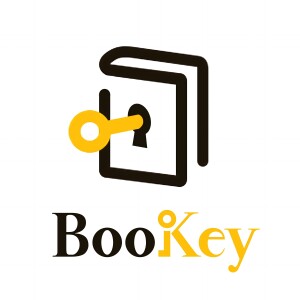
- Podcast Features
-
Monetization
-
Ads Marketplace
Join Ads Marketplace to earn through podcast sponsorships.
-
PodAds
Manage your ads with dynamic ad insertion capability.
-
Apple Podcasts Subscriptions Integration
Monetize with Apple Podcasts Subscriptions via Podbean.
-
Live Streaming
Earn rewards and recurring income from Fan Club membership.
-
Ads Marketplace
- Podbean App
-
Help and Support
-
Help Center
Get the answers and support you need.
-
Podbean Academy
Resources and guides to launch, grow, and monetize podcast.
-
Podbean Blog
Stay updated with the latest podcasting tips and trends.
-
What’s New
Check out our newest and recently released features!
-
Podcasting Smarter
Podcast interviews, best practices, and helpful tips.
-
Help Center
-
Popular Topics
-
How to Start a Podcast
The step-by-step guide to start your own podcast.
-
How to Start a Live Podcast
Create the best live podcast and engage your audience.
-
How to Monetize a Podcast
Tips on making the decision to monetize your podcast.
-
How to Promote Your Podcast
The best ways to get more eyes and ears on your podcast.
-
Podcast Advertising 101
Everything you need to know about podcast advertising.
-
Mobile Podcast Recording Guide
The ultimate guide to recording a podcast on your phone.
-
How to Use Group Recording
Steps to set up and use group recording in the Podbean app.
-
How to Start a Podcast
-
Podcasting
- Podcast Features
-
Monetization
-
Ads Marketplace
Join Ads Marketplace to earn through podcast sponsorships.
-
PodAds
Manage your ads with dynamic ad insertion capability.
-
Apple Podcasts Subscriptions Integration
Monetize with Apple Podcasts Subscriptions via Podbean.
-
Live Streaming
Earn rewards and recurring income from Fan Club membership.
-
Ads Marketplace
- Podbean App
- Advertisers
- Enterprise
- Pricing
-
Resources
-
Help and Support
-
Help Center
Get the answers and support you need.
-
Podbean Academy
Resources and guides to launch, grow, and monetize podcast.
-
Podbean Blog
Stay updated with the latest podcasting tips and trends.
-
What’s New
Check out our newest and recently released features!
-
Podcasting Smarter
Podcast interviews, best practices, and helpful tips.
-
Help Center
-
Popular Topics
-
How to Start a Podcast
The step-by-step guide to start your own podcast.
-
How to Start a Live Podcast
Create the best live podcast and engage your audience.
-
How to Monetize a Podcast
Tips on making the decision to monetize your podcast.
-
How to Promote Your Podcast
The best ways to get more eyes and ears on your podcast.
-
Podcast Advertising 101
Everything you need to know about podcast advertising.
-
Mobile Podcast Recording Guide
The ultimate guide to recording a podcast on your phone.
-
How to Use Group Recording
Steps to set up and use group recording in the Podbean app.
-
How to Start a Podcast
-
Help and Support
- Discover

"Designing Your Life" by Bill Burnett and Dave Evans is a self-help book that aims to guide readers in creating a fulfilling and purpose-driven life. The authors, who are both Stanford University professors and design experts, apply principles of design thinking to personal development and offer a practical framework for life design.
The book starts by questioning the traditional career and life planning approach, which often limits individuals by assuming they must find a single passion or purpose. Instead, Burnett and Evans propose that life design is an ongoing, iterative process that involves trying out different possibilities, adapting to change, and continuously refining one's path. They emphasize the importance of prototypes and experiments to gain insight and gather data about what works and what doesn't.
Throughout the book, the authors introduce various tools and exercises to help readers understand themselves, define what matters to them, and explore potential paths. They encourage readers to adopt a growth mindset, embrace failure as a learning opportunity, and focus on creating a well-balanced and fulfilling life across different areas, such as work, relationships, health, and hobbies.
Burnett and Evans discuss the concept of "gravity problems," which are external constraints that can limit one's choices, and provide strategies for overcoming or working around these constraints. They also address the importance of building a supportive community and finding mentors to guide and inspire personal growth.
The book concludes by emphasizing the journey and process of life design rather than reaching a fixed destination. Burnett and Evans emphasize the need to constantly adapt and redesign one's life based on evolving circumstances and personal growth.
Overall, "Designing Your Life" offers a practical and unique approach to personal development, guiding readers to design a life that is fulfilling, meaningful, and aligned with their values and aspirations.
Chapter 2:the meaning of Designing your life book"Designing Your Life" by Bill Burnett and Dave Evans is a self-help book that guides readers on how to apply design thinking principles to create a fulfilling and purposeful life. It uses the principles of design to help individuals uncover their passions, define meaningful goals, and ultimately make proactive choices to shape their own lives.
The authors, who are both professors at Stanford University, encourage readers to approach their lives as a design project, just like any other problem that needs solving. They argue that by adopting a design mindset and applying design thinking techniques, individuals can overcome the challenges and uncertainties they may encounter in their personal and professional lives.
The book offers practical tools and exercises to help readers reframe their perspectives, explore various possibilities, and prototype potential solutions. It emphasizes the importance of actively experimenting with different options, rather than passively accepting the default paths society often dictates.
Through real-life stories, case studies, and expert interviews, Burnett and Evans provide insights and strategies for designing a life that aligns with personal values, interests, and strengths. They explore topics such as redefining success, finding purpose, building meaningful relationships, and navigating career transitions.
Overall, "Designing Your Life" aims to empower readers to take an active role in shaping their own lives, viewing it as an ongoing design process rather than something predetermined or fixed. It encourages individuals to embrace curiosity, creativity, and resilience in order to create a life that brings them joy, fulfillment, and a sense of purpose.
Chapter 3:Designing your life book chaptersChapter 1: Start Where You Are
This chapter introduces the design-thinking approach to life and explains the importance of taking a step back to evaluate one's current situation. It encourages readers to identify their frustrations, values, and aspirations as a starting point for designing a better life.
Chapter 2: Building a Compass
In this chapter, the authors discuss the importance of having a clear "compass" – a set of core values and beliefs – to guide decision-making and actions. They provide exercises to help readers identify and prioritize their values, which will serve as a foundation for designing their life.
Chapter 3: Wayfinding
Wayfinding is the art of navigating through life's uncertainties and challenges. This chapter explores various ways to gain clarity and direction, such as exploring multiple life paths, prototyping small experiments, and seeking advice from others. It emphasizes the need to take action and learn from failure and iteration.
Chapter 4: Getting Unstuck
This chapter focuses on overcoming obstacles and moving forward. It provides strategies for reframing challenges, building resilience, and cultivating a growth mindset. The authors encourage readers to embrace failure as a learning opportunity and to develop a positive attitude towards both success and setbacks.
Chapter 5: Designing Your Lives
The authors discuss the process of actively designing different aspects of life, including work, health, relationships, and personal growth. They provide tools, frameworks, and exercises to help readers set goals, explore possibilities, and create actionable plans. They also emphasize the importance of finding work-life integration and designing a life that aligns with one's personal values and goals.
Chapter 6: Prototyping your Way Forward
This chapter introduces the concept of prototyping – creating small-scale experiments and trying out different ideas or approaches before committing to a full-scale plan. It explores various techniques for prototyping, such as brainstorming, seeking feedback, and iterating on ideas. The authors stress the value of continuous experimentation and adaptation in the design process.
Chapter 7: How not to get a job
This chapter provides guidance on finding meaningful work and navigating the job search process. It offers advice on crafting a compelling resume, networking effectively, and preparing for job interviews. The authors also discuss the importance of aligning work with one's passion and purpose, and provide tools for evaluating job opportunities.
Chapter 8: Designing Your Dream Job
In this chapter, the authors delve further into the process of designing one's ideal career. They discuss strategies for creating a fulfilling work-life, considering alternative work arrangements, and achieving work-life balance. They also explore the concept of "flow" – the state of optimal engagement and satisfaction in work.
Chapter 9: Building a team
This chapter focuses on the importance of building and maintaining meaningful relationships. It discusses strategies for finding and nurturing supportive communities and networks, including family, friends, mentors, and colleagues. The authors also explore the concept of "workview" – understanding how one's work contributes to a larger purpose or mission.
Chapter 10: Conclusion
The final chapter summarizes the key principles and techniques discussed in the book and offers a call to action for readers to actively design their lives. It encourages readers to embrace the design-thinking mindset and continue refining and iterating on their life design.
Chapter 4: Quotes of Designing your life book- "Designing your life means taking an intentional approach to creating the life you want, rather than simply letting life happen to you."
- "Life design is a mindset that empowers you to reframe problems as opportunities and take a proactive approach to shaping your future."
- "The key to designing your life is experimenting and iterating, treating your life as a prototype that is constantly evolving."
- "Design thinking is a powerful tool for solving complex problems and can be applied to all aspects of life, not just product design."
- "Don't be afraid to challenge societal norms and expectations when designing your life – what works for others may not work for you."
- "Your values and interests should be at the core of your life design process, as they provide the guiding compass for making choices and setting goals."
- "Thinking like a designer means embracing failure as an opportunity to learn and grow, rather than a reason to give up."
- "Designing your life is not about finding the perfect job or achieving some predetermined definition of success – it's about continuous exploration and adaptation."
- "Pay attention to the small moments of joy and fulfillment in your life, as they can provide valuable insights into what truly brings you happiness."
- "Designing your life is an ongoing journey, not a destination – embrace the process and enjoy the ride."
More Episodes
 2025-03-13
2025-03-13
 22
22
 2025-03-12
2025-03-12
 17
17
 2025-02-28
2025-02-28
 17
17
 2025-02-25
2025-02-25
 16
16
 2025-02-18
2025-02-18
 23
23
 2025-02-17
2025-02-17
 35
35
Create your
podcast in
minutes
- Full-featured podcast site
- Unlimited storage and bandwidth
- Comprehensive podcast stats
- Distribute to Apple Podcasts, Spotify, and more
- Make money with your podcast
It is Free
- Privacy Policy
- Cookie Policy
- Terms of Use
- Consent Preferences
- Copyright © 2015-2025 Podbean.com




